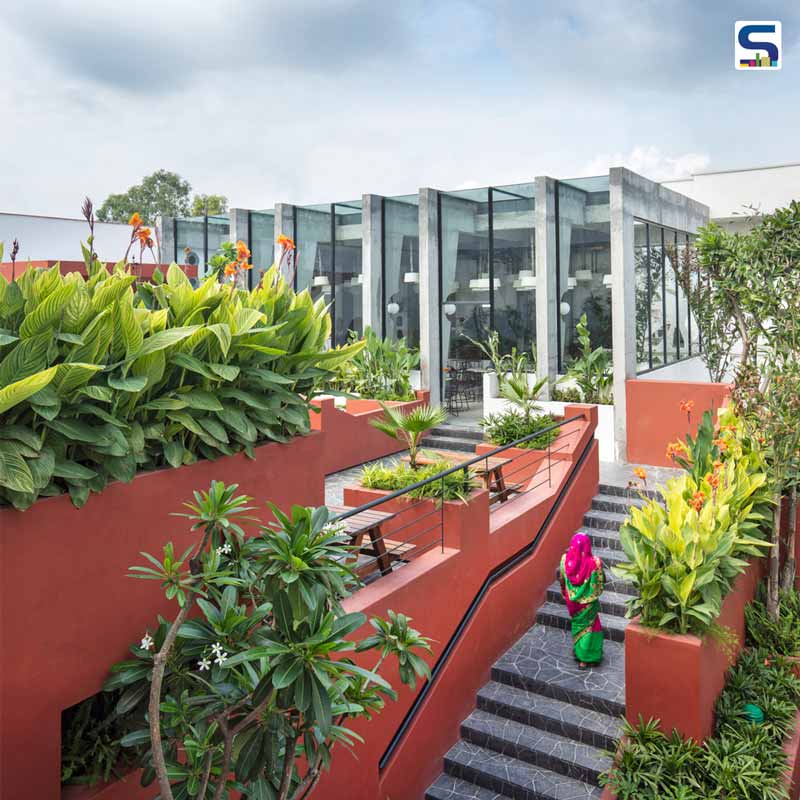
Inspired by the imagery of an Indian village, this cafe and bar in the Moradabad city of northern Uttar Pradesh designed by New Delhi-based design studio, Portal 92. Wisely named as ‘The Village Cafe’, it allows today’s urban Indian to get a clear memory of a village. Textures and volumes of the space have been designed to reference an experience, reminiscent of rural Indian settlements. Terracotta plastered walls and uniform concrete portals distinguishes the project. The firm shared with SURFACES REPORTER (SR) more about the project in detail. Have a look:
Also Read: Terracotta Tiles as A Facade Material
Identity of India
Being the primary unit of organization and habitation in India, villages over a while have become synonymous with the ‘identity of India’ itself. The cultural and architectural diversity found in villages across India can be mesmerizing yet the influence of globalized invasive materials and know-how can be seen percolating unanimously.
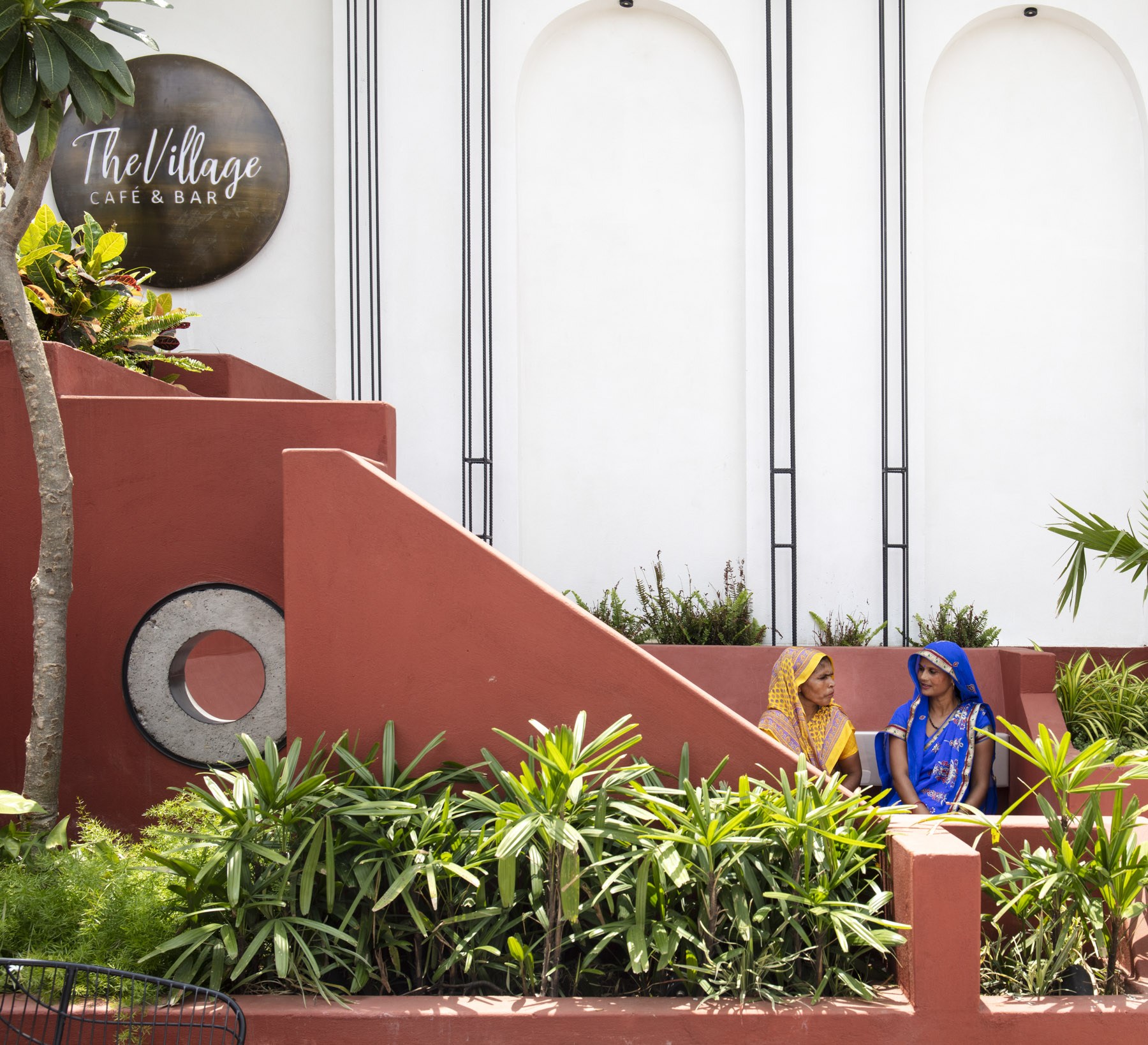
The merits and demerits of this invasion continue to spark attempts at discovering sensitive design solutions in an actively urbanizing India. The texture of which itself is heavily interwoven with various village-like settlements.
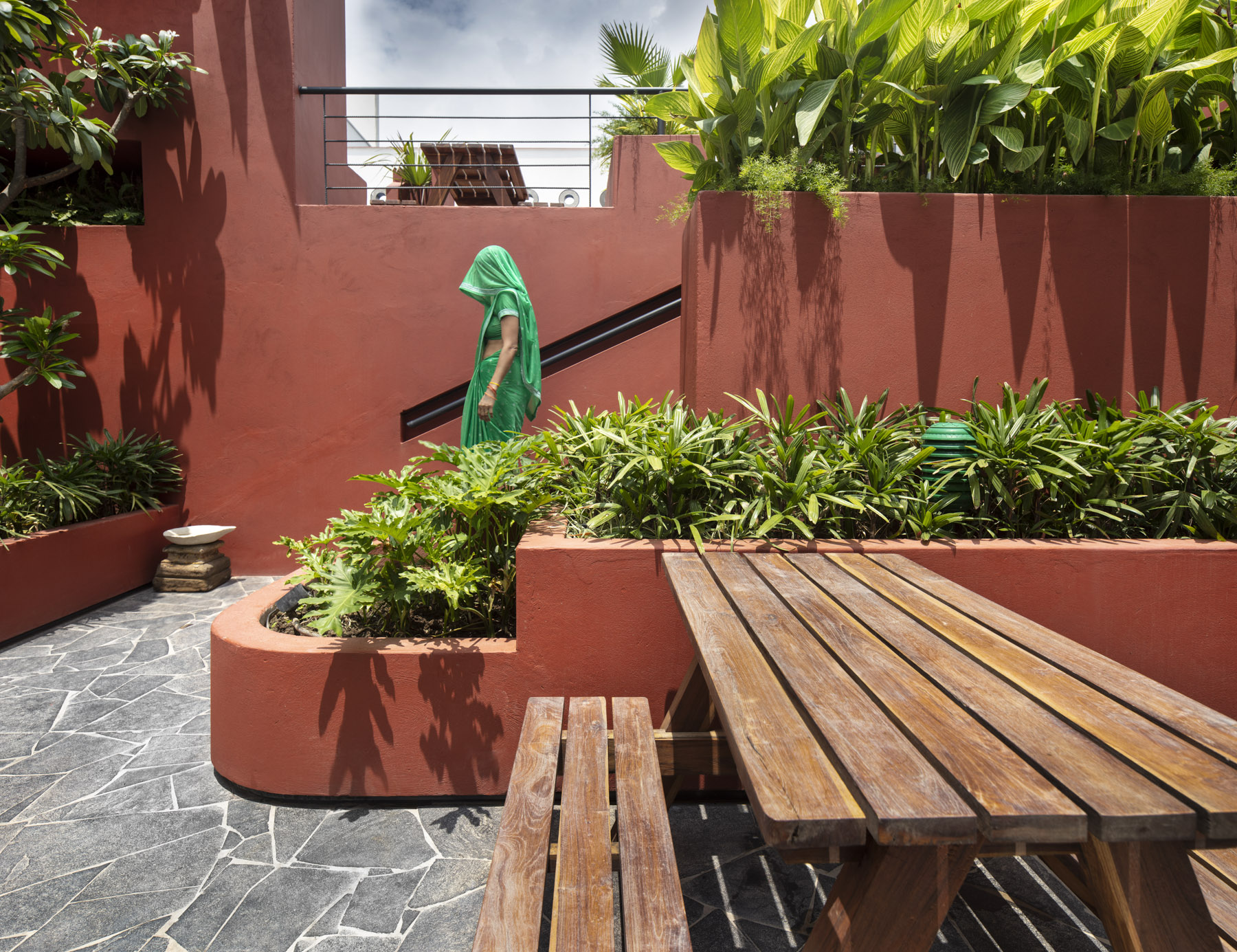
When the firm received the proposed name for the Café/Bar from the client, these questions suddenly came to light. Studying the dichotomy in schools of thought regarding what villages represent and the interpretations of their relevance, and ever-changing state was where they started their ideation.
Well-Crafted Geometric Composition
Textures and volumes of the space have been designed to reference an experience, reminiscent of rural Indian settlements. Shaded gathering spaces that are semi-shielded from direct view from the larger sitting zones. The possibility of various movement patterns, give the illusion of an intimate organic settlement wherein the regulars find their path, seldom taken by new visitors.
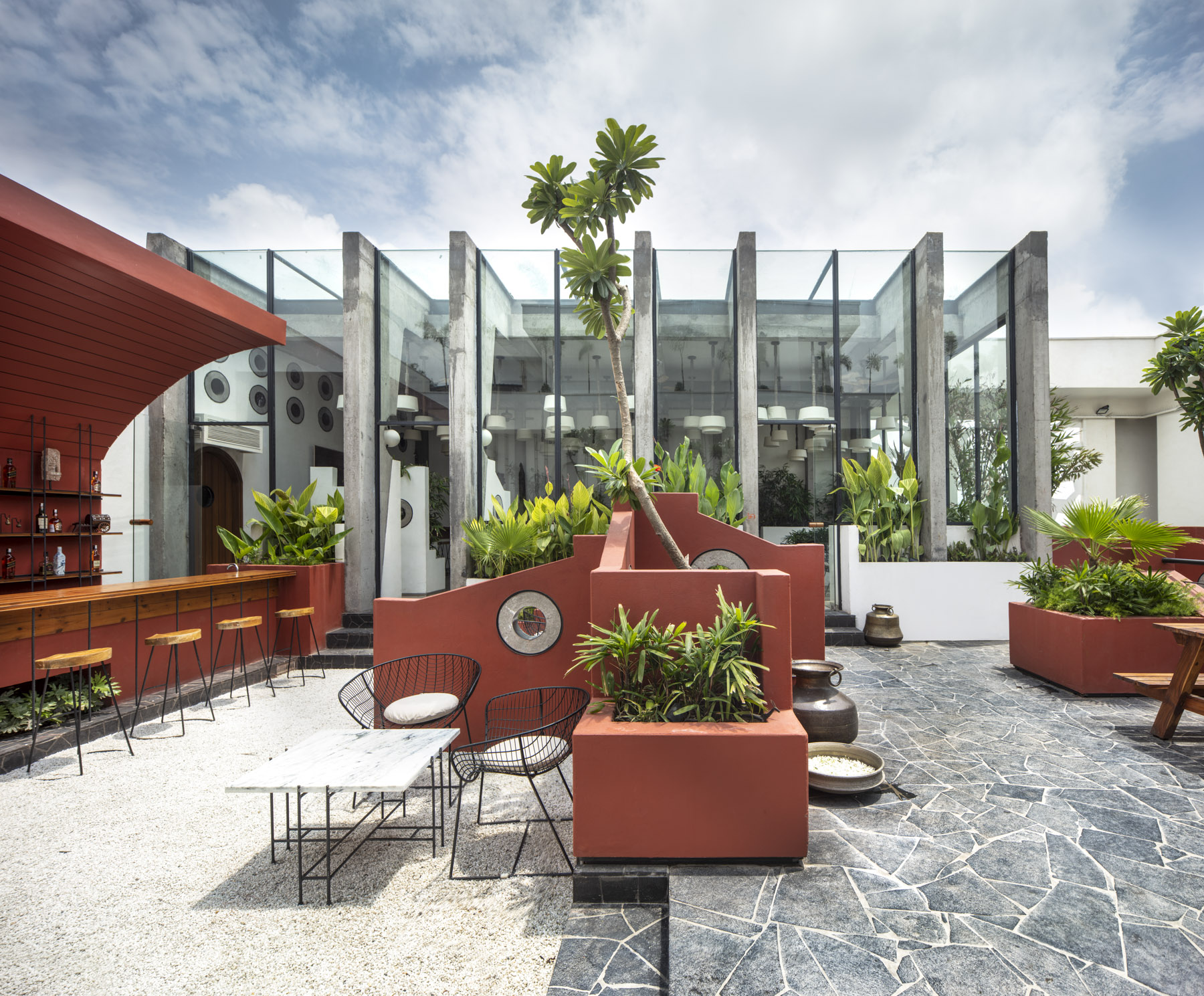
The cafe is divided into two levels allowing both indoor and outdoor seating.
Planters Lend An Inviting Contrast
The form of the planters and walls have been carefully modulated to generate a surreal impression of rural settlements.
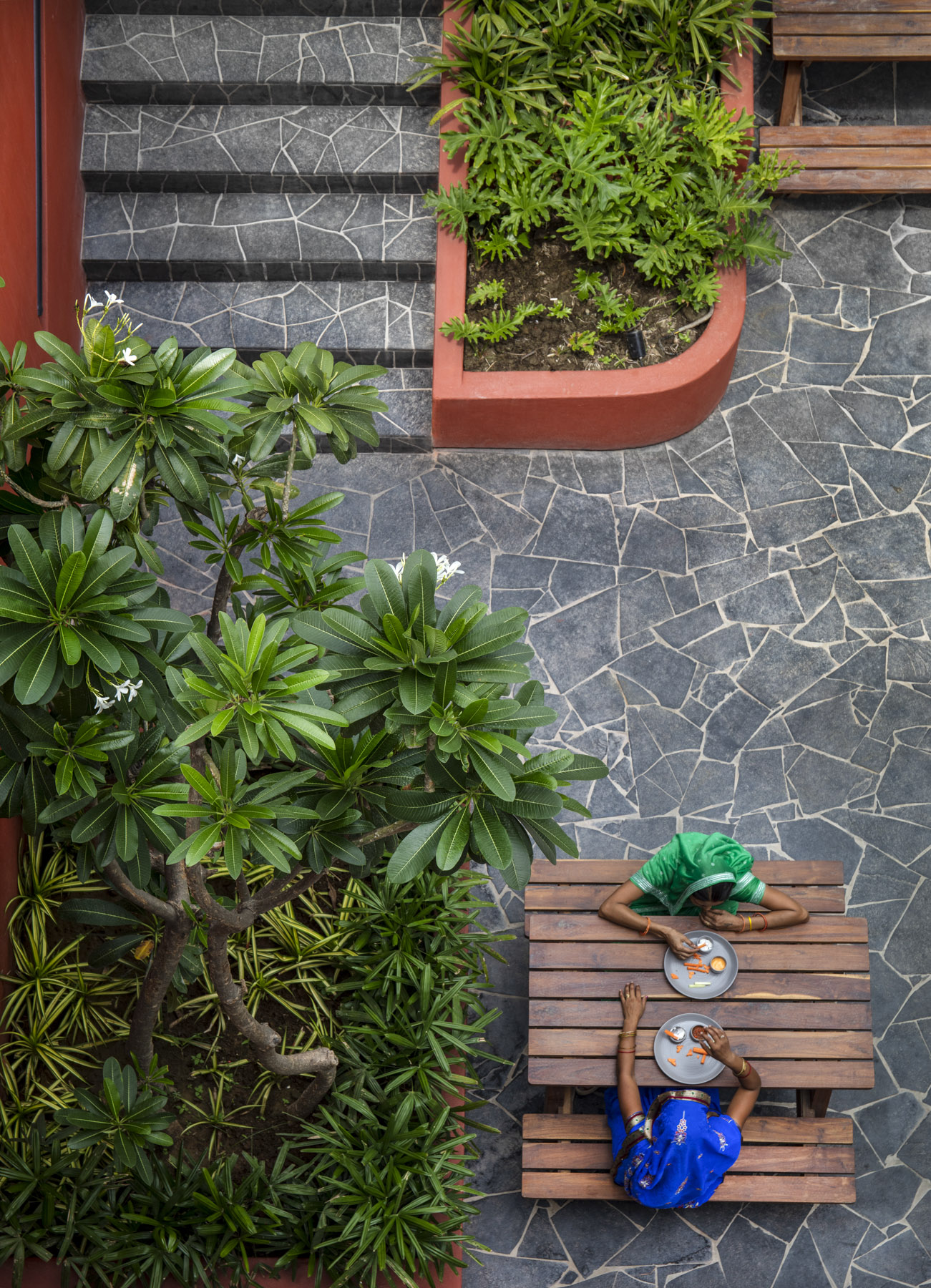
The terracotta plaster was achieved after various trials to lend warmth and vibrance to space, while the exposed concrete rings cast in iron sheets puncture these walls exposing glimpses across.
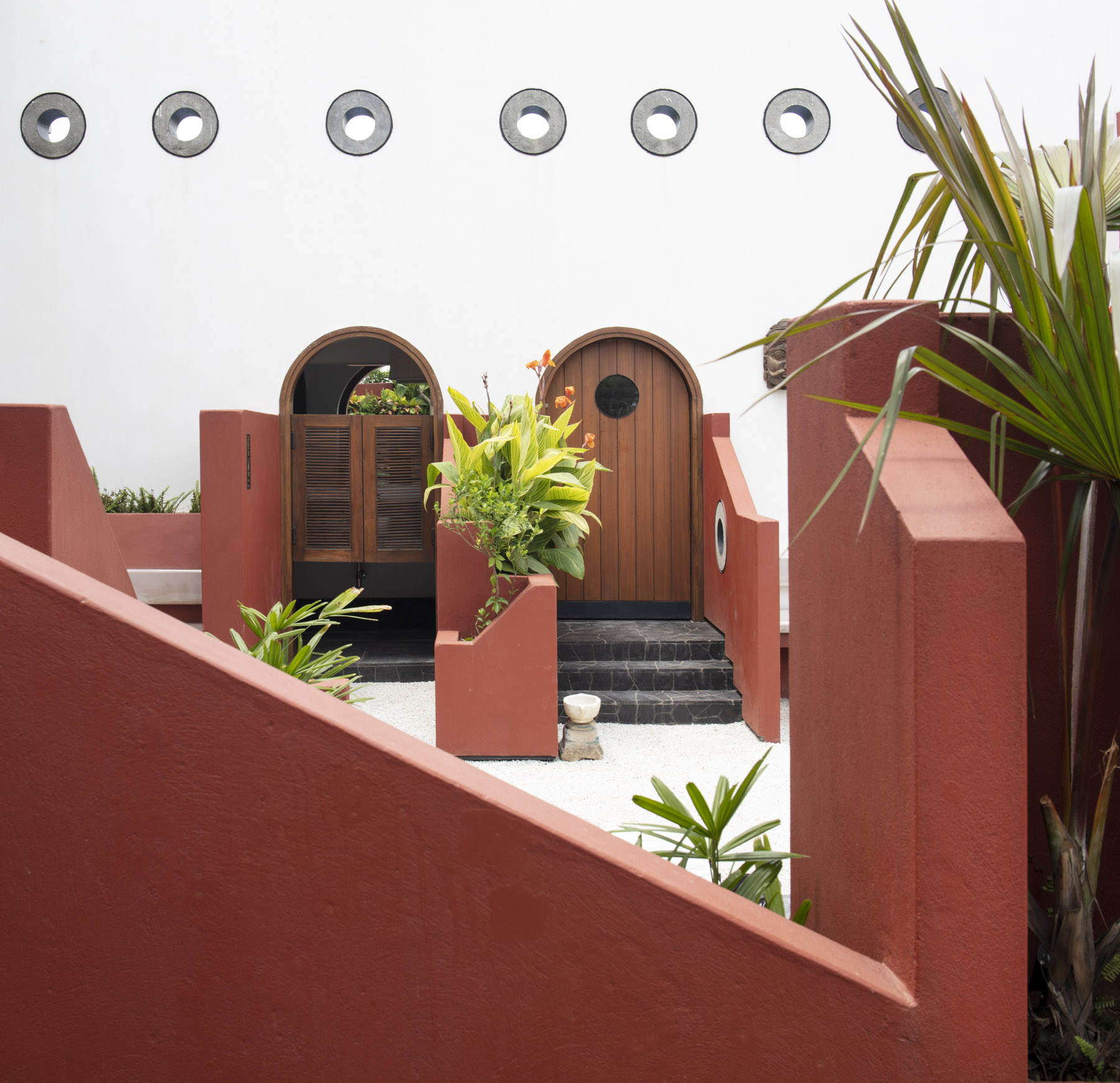
The plant species were locally curated to ensure their survival with the least resistance.
Also Read: Colourful Domes Village in Hormuz Designed by ZAV Architects
Highlighting Cultural Elements of the City
The Moradabad city has a thriving brass handicrafts industry hence lending it the name of Pital Nagri (“Brass City”).
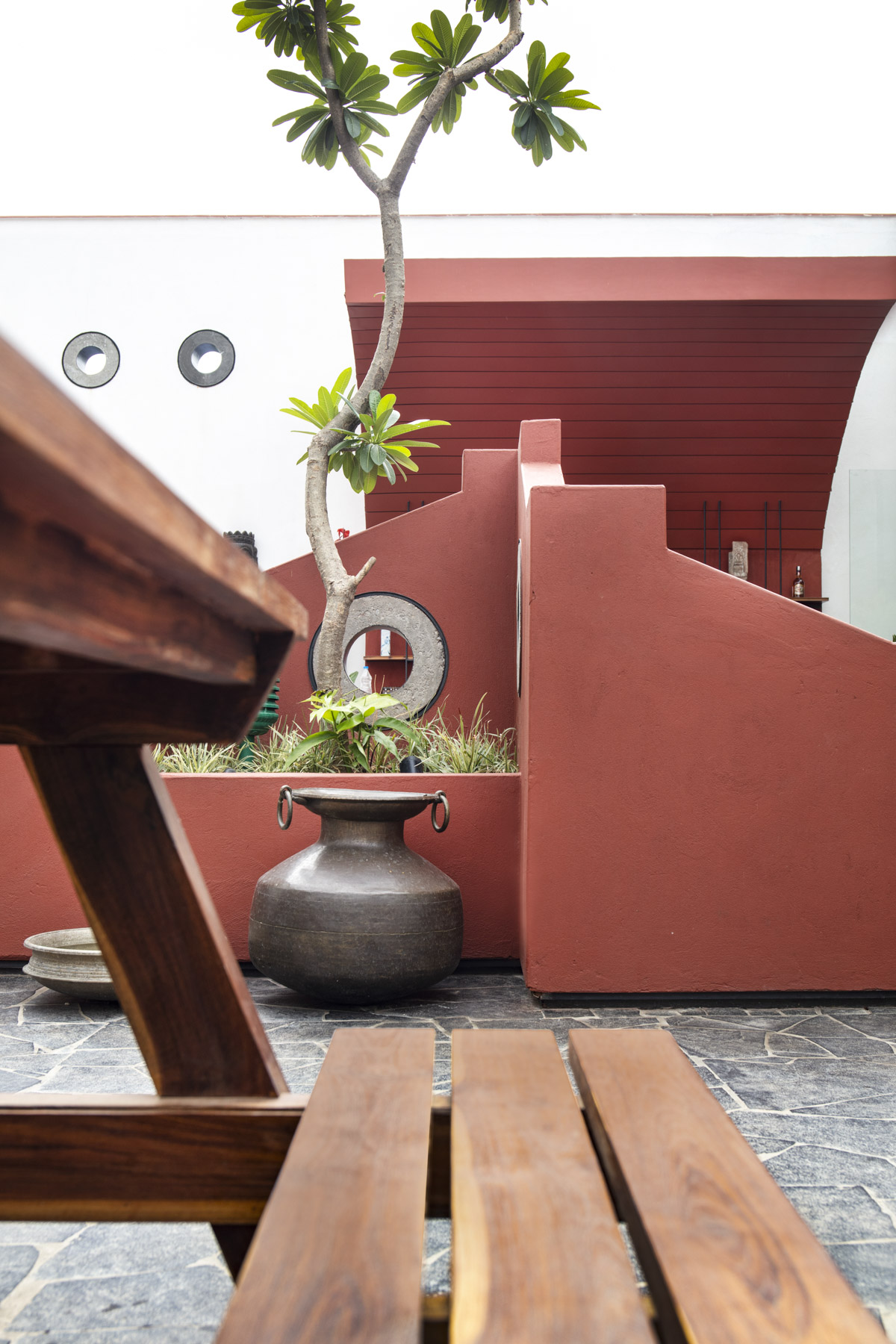
Brass vessels of different sizes were incorporated in the décor to reference this local trade.
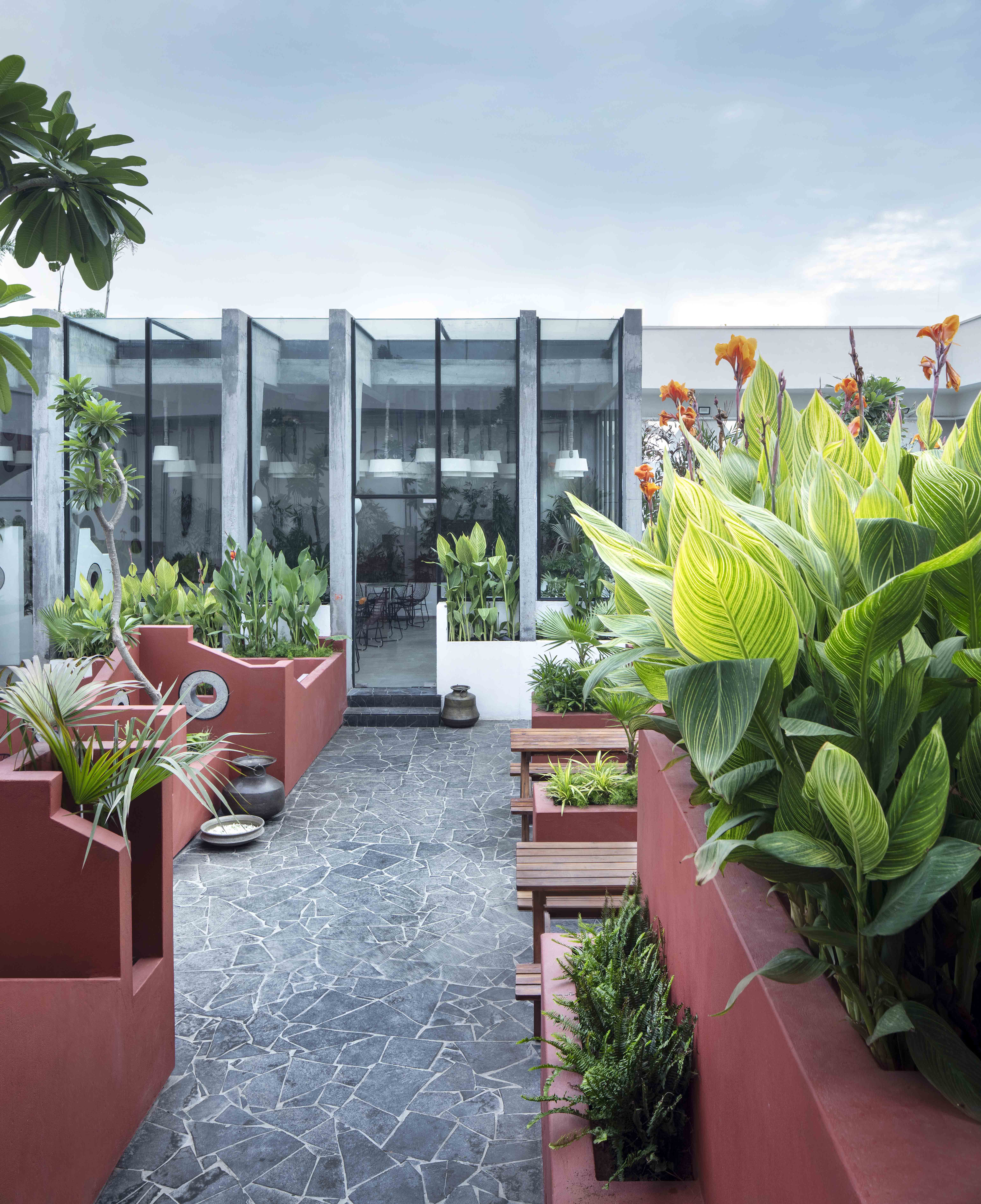
Indoor pendant lamps were customized to be suspended from the ceiling using wooden posts with carvings.
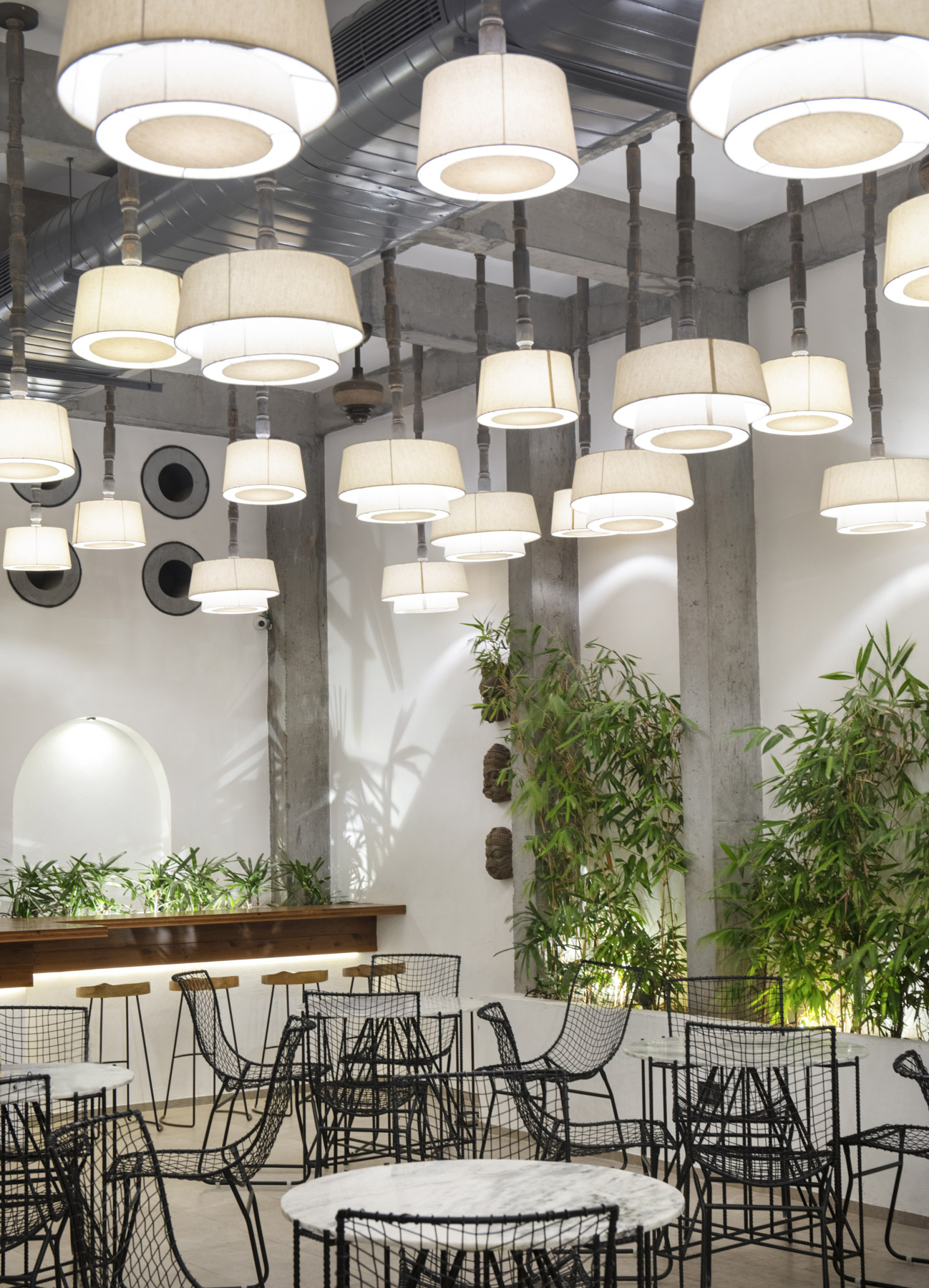
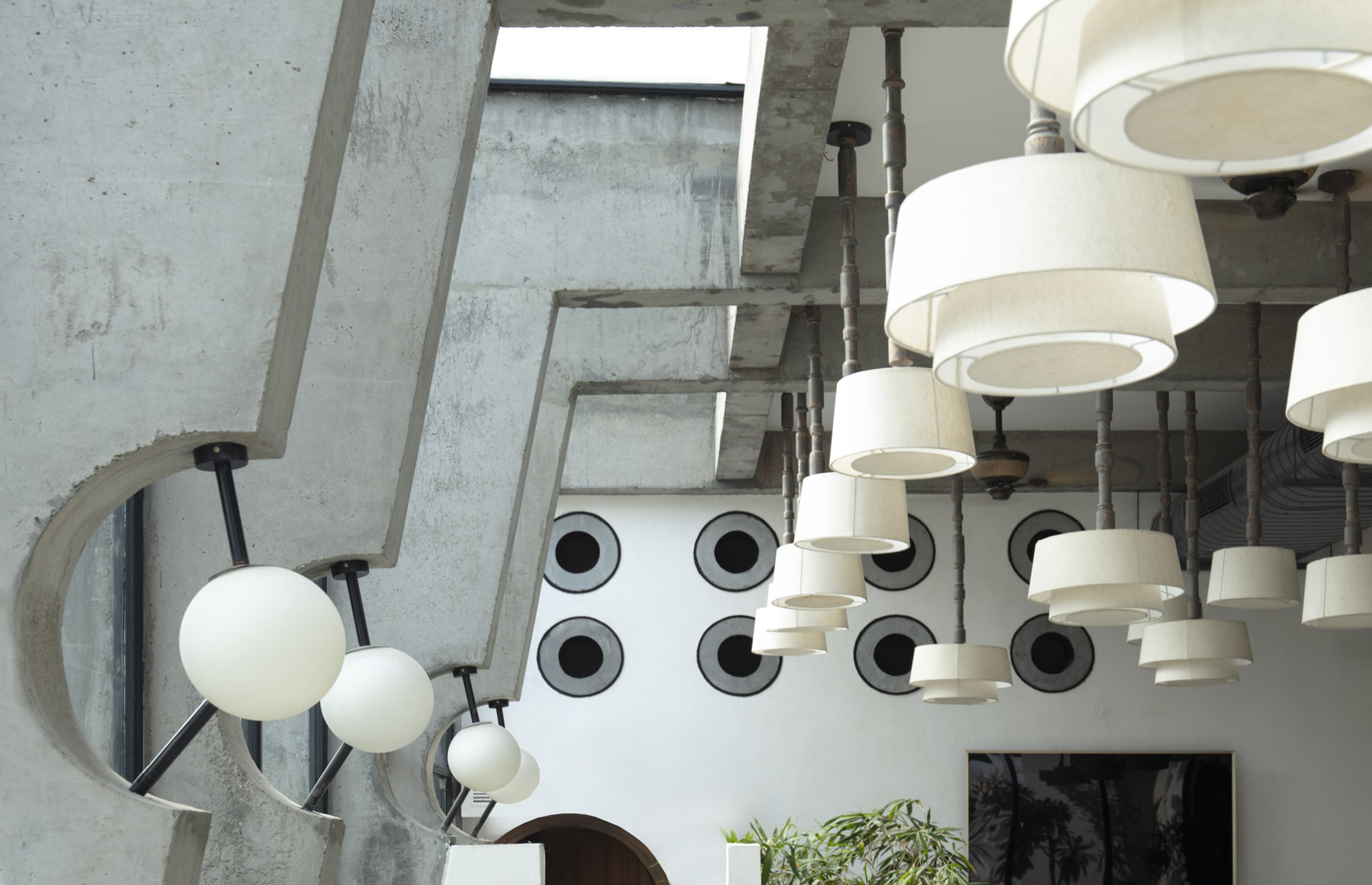
Black Kadappa Stone Flooring
The flooring of the central court was composed using broken slabs of rough black Kadappa stone found locally in India.
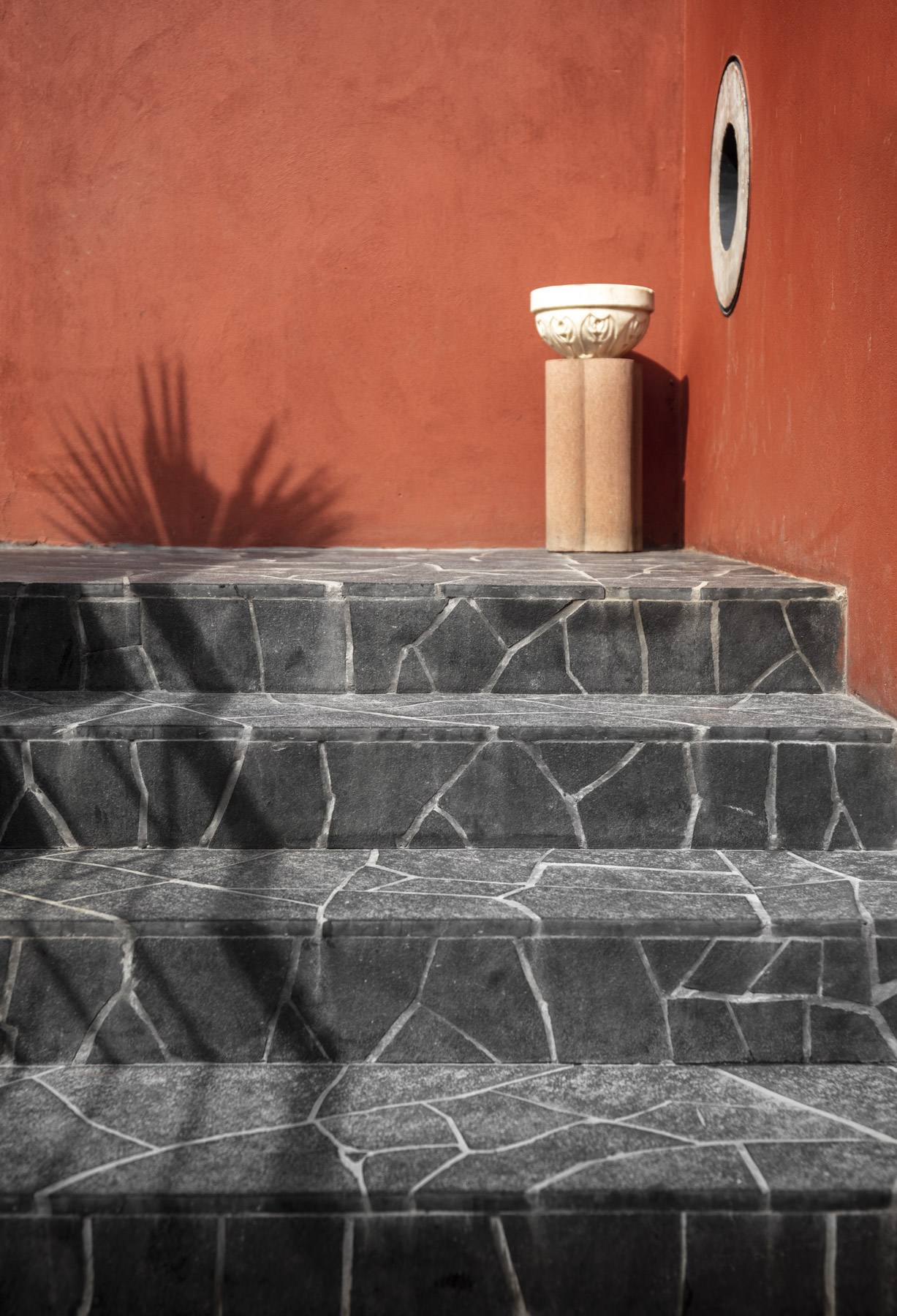
The intent became to design a space that represents a lucid memory of a village for today's ‘Urban Indian’, looking for a drink down the nostalgic lane.
Project Details
Project Name: The Village Cafe
Architecture Firm: Portal 92
Firm Location: Sultanpur, New Delhi, India
Completion Year: 2019
Gross Built Area: 600.0 m2
Project Location: Moradabad, Uttar Pradesh, India
Lead Architects: Aanchal Sawhney, Sagar Goyal
Photo Credits: Niveditaa Gupta
Additional Credits
Design Team: Aanchal Sawhney, Sagar Goyal, Praneet Singh, Varsha Rath, Astha Verma
Client: Prateek Ahuja